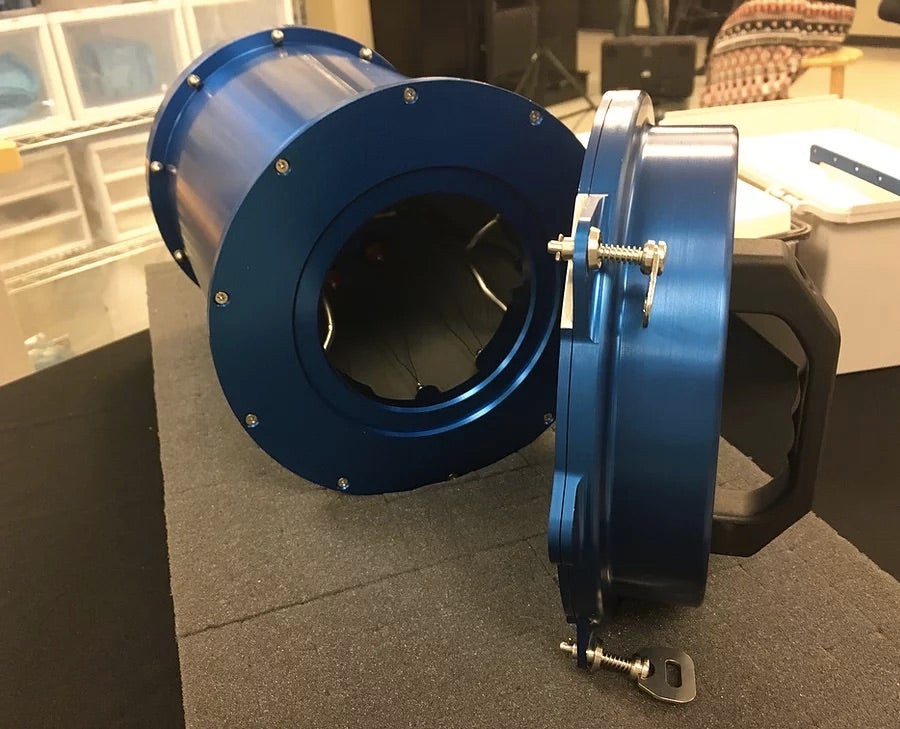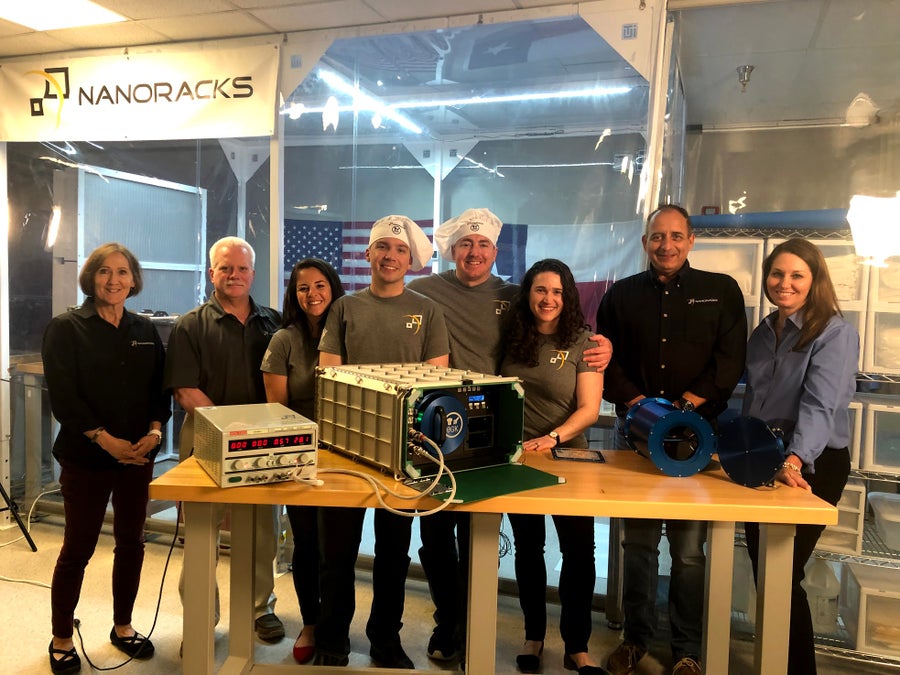Space food has come a long way from the powders, purees and freeze-dried cubes early astronauts had to endure. New technologies are pushing the boundaries of food preparation in microgravity. But will astronauts ever be able to simply cook homemade meals like we do on Earth? Maybe one day, but for now they might have to start with dessert: this fall the International Space Station (ISS) will test the first “real” space oven—by baking cookies.
Astronauts rely on meals for emotional, as well as physical, health. With this in mind, space food is carefully selected, prepared, contained, dispensed, dehydrated, rehydrated, heated and cooled with ever evolving technology. An extraction system pulls moisture from the cabin air and recycles it into drinking water, a forced-air convection “oven” (which does not get hot enough to cook meals from scratch) heats up prepared foods, and a custom espresso machine dispenses caffeine.
But for missions to the moon or Mars, space-cooking technology still has to overcome some serious obstacles. Food will be subject to stricter weight, volume and durability requirements, even as it is supposed to support crew morale for longer stretches. When scientists investigated the potential psychological effects of long-term missions and deep-space travel, they found things would be more bearable if astronauts have access to a good variety of foods that smell and taste a little bit more like home. The act of cooking itself also helps, according to former NASA astronaut Mike Massimino, who says he is a partner in the cookie-baking enterprise. When astronauts trained on earthbound survival expeditions, he says, preparing meals “added a sense of normalcy to what you were doing, being away from home. And I think that that’s missing in space to some degree.”
On supporting science journalism
If you're enjoying this article, consider supporting our award-winning journalism by subscribing. By purchasing a subscription you are helping to ensure the future of impactful stories about the discoveries and ideas shaping our world today.

This chamber, which will eventually hold the cookie dough, is the oven part of the device. It fits into a larger locker-size container that receives power from the ISS. Credit: NanoRacks
One initiative that aims to tackle this is a space oven specially designed by a company called Zero G Kitchen, with the help of NanoRacks, a firm that supports experiments and designs products for use in space. NanoRacks and NASA are currently closing in on a date for launching the space oven to the ISS—along with a supply of the hotel chain DoubleTree by Hilton’s signature chocolate chip cookie dough—with NASA’s NG-12 cargo mission this fall. But astronauts will still have to exercise a little patience: after baking their first batch, they will have to send the results home for safety testing instead of eating them.
If successful, this will be the first oven to actually bake food in space. “I believe that if the scientists are able to do that, that will be game-changing for both science and astronauts,” says Maeena Naman Shafiee, a researcher who studies food technology.
The delicate and alien environments involved in space travel create a number of challenges when it comes to baking. Inside an oven on Earth, air heats heats up and rises, then cools and falls, causing it to continuously circulate. This distributes the heat evenly, which is necessary to cook a piece of food through. But in the microgravity of the ISS, the air would not “float” toward the top of an oven. To overcome this problem, the space oven has a tray that holds foods in place, and heating elements set around its interior distribute heat evenly. When NanoRacks performed thermal modeling of the oven’s function in microgravity, the results suggested heat will concentrate in the center of the cylindrical, insulated cooking chamber.
Airflow is not the only challenge. Fire poses a huge risk, and NASA and its partners require extensive testing to avoid putting crews in danger. So the developers gave their oven specially designed ventilation and insulating components, allowing it to pass an initial NASA safety review. “All the heat elements are well isolated, and the heating is well controlled, says Ian Fichtenbaum, co-creator of the oven and co-founder and co-chef at Zero G Kitchen. “The astronauts themselves will also be using a heavy ‘oven mitt’ when they take out the food sample.”
And if space bakers plan on making anything from scratch, microgravity poses yet another obstacle. Fresh ingredients, unlike preprepared frozen dough, would float around and be nearly impossible to work with, says Vickie Kloeris, who recently retired from her position as manager of the International Space Station Food System at NASA’s Johnson Space Center. “You can’t measure flour, put it in a bowl—none of that’s going to happen in microgravity,” she says. “So really, the only application that I see for an oven in orbit is if you’re starting with something like a frozen item.” As Kloeris points out, refrigeration is limited onboard the ISS.

The NanoRacks team shows off the space oven at their lab in Webster, Texas. Credit: NanoRacks
For the time being, however, premade cookie dough gives astronauts a good way to experiment. And the results could be surprising: According to Mary Murphy, senior internal payloads manager at NanoRacks, the oven team is not sure what shape the cookies might take, because things move and flow so differently in microgravity. “One of the theories that we have is perhaps it will come out spherical,” Murphy says. Here on Earth, she explains, cookie dough puffs upward as it bakes—but in microgravity, it might puff in all directions at once.
No matter what shape it takes, a cookie’s appeal is more than its appearance. It also provides a powerful, sensory reminder of home. “Is the ISS going to smell like fresh-baked cookies? We don’t know. But that’s a feeling we all know and love, and that’s something that will make someone feel at home,” says Abby Dickes, marketing and communications manager at NanoRacks.
Still, as exciting as this prospect is, other space-food devices have sparked public interest but failed to support astronaut crews in the long term. The space espresso machine, for example, has encountered a host of technical issues. And a couple of years ago, NASA made headlines by funding a 3-D printer for making pizza. This initiative blossomed into the space-tech start-up BeeHex, which successfully built the printer. Funding was cut short, however, and the device never left Earth. The 3-D pizza printer is now being developed for use in amusement parks.
Whatever happens with this latest experiment, the space oven will probably help inspire more advanced cooking machines for microgravity. “We do think that eventually the oven has to be made more ‘practical’—more power, larger space, a larger variety of food trays and cooking modes—for it to be used for more than experiments,” Fichtenbaum says. “But we have no doubt that this will happen eventually.”
